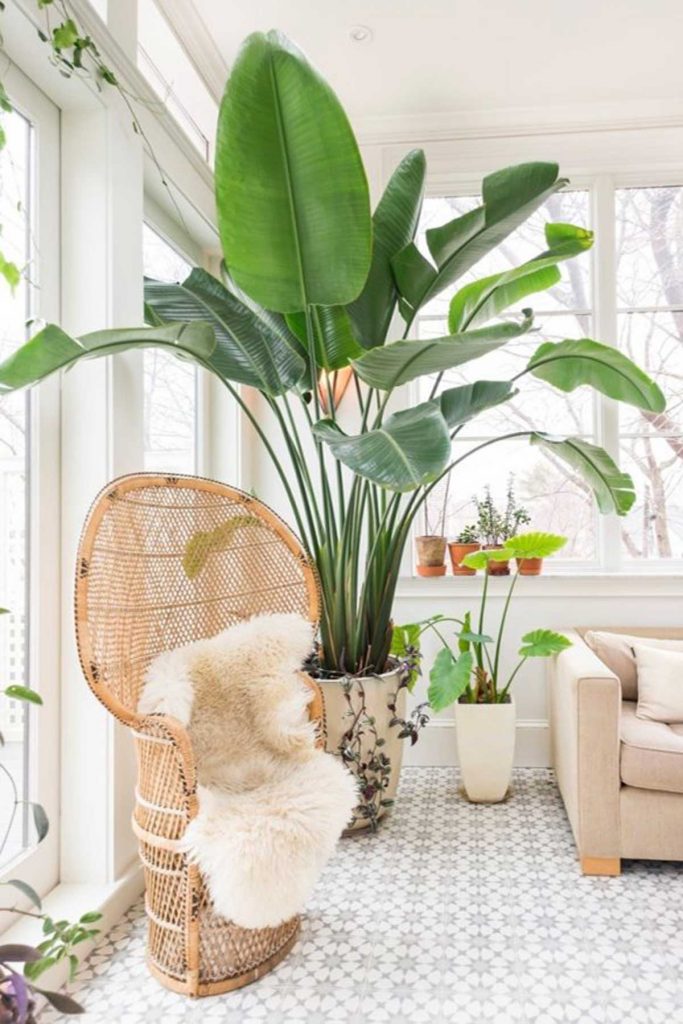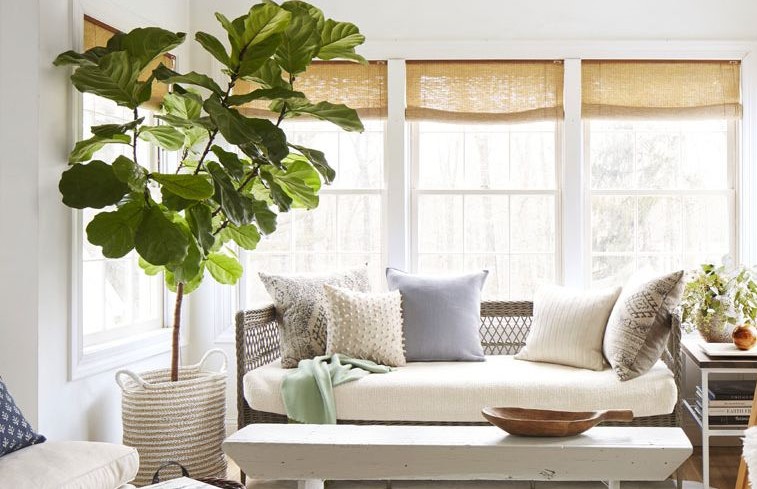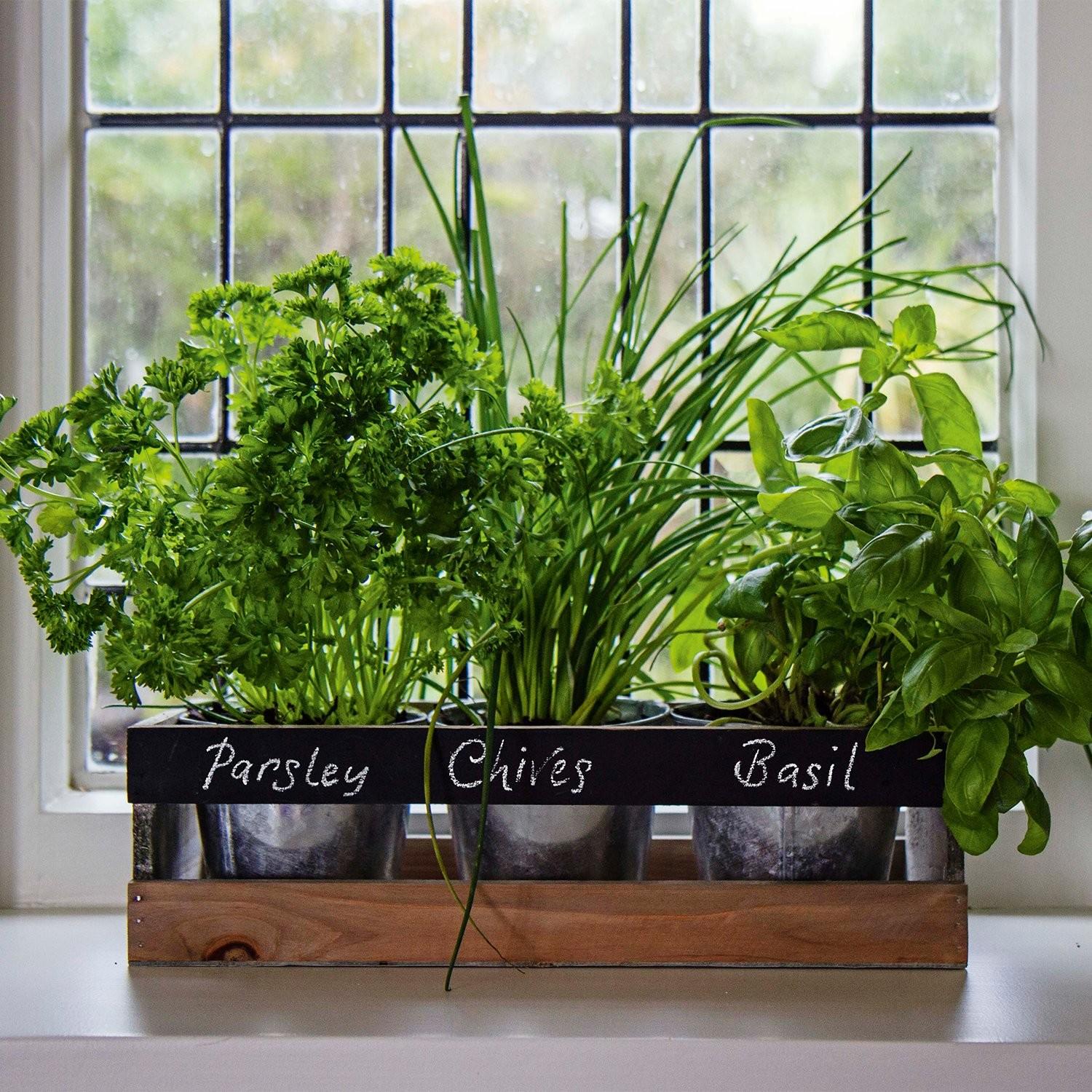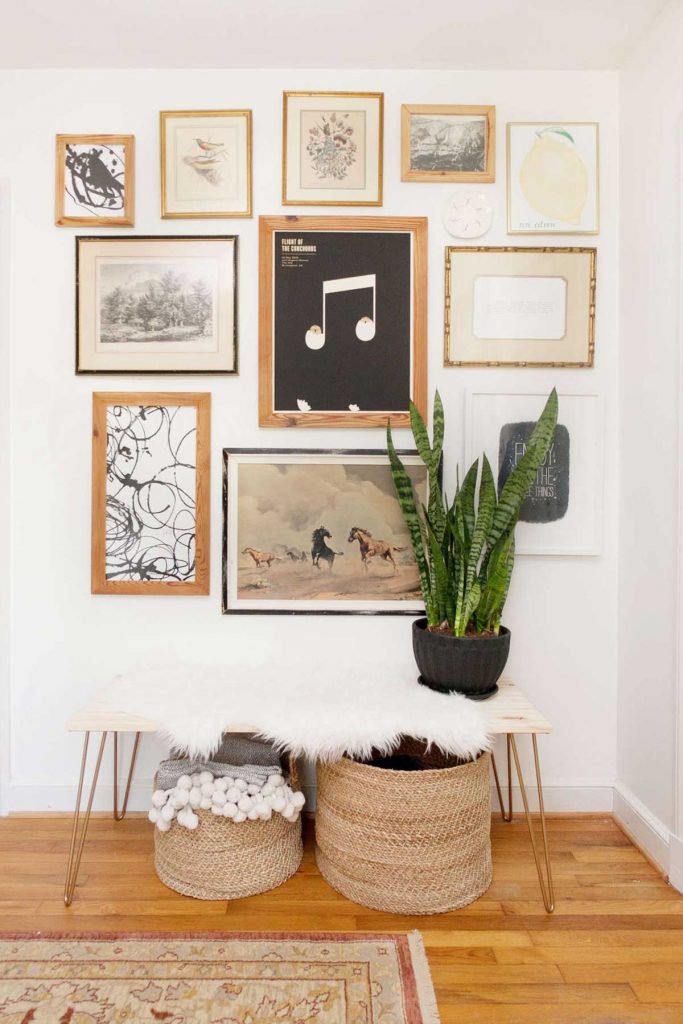Who said plants have to stay outside? Indoor plants are an essential part of every home’s interior design. Plants are proven to boost your mood, decrease anxiety and stress and improve the air quality in the room. Whether it be a large fern or a small succulent, a little greenery can never go astray. The only tricky part is choosing the right plants for the right rooms. When deciding on plants, keep in mind the amount of light the room gets and the level of care the plant needs. There are four types of light to consider:
– Bright direct light (full sun)
– Bright indirect light (partial shade)
– Medium indirect light
– Low indirect light
Here’s our top picks (and some handy care tips) for indoor plants and where they should be placed.

1. Living room
The living room is the most lively room in the house (as the name suggests). This is the room that both friends and family are going to see and use the most so it’s a good idea to place some larger plants in this area. Place plants on a side table next to the couch or TV unit or on the coffee table. Rubber tree and bird of paradise plants are perfect for a splash of greenery, but if you’re after something with a little more colour, opt for philodendron, begonias and succulents.
Our top picks
– Bird of Paradise – full sun, water weekly, increase if light increases
– Rubber tree – Low light to full sun, water weekly
– Philodendron – bright to low indirect light, water weekly
– Begonia – Low to full sun
– Succulents – Bright direct light, water monthly
– Fiddle Leaf Fig – Moderate to bright indirect light, regular watering
2. Kitchen
Plants in the kitchen are not only aesthetically pleasing but can also be functional. Consider potting herbs in small terracotta pots and placing them on the window seal. This makes cooking easy as you can simply grab a few leaves to sprinkle over your meat. The kitchen is often humid due to hot cooking appliances and therefore plants need to be able to withstand high temperatures. Want to create the ideal herb garden? Check out our herb garden tips and tricks.
Our top picks
– Ferns – moderate to low indirect light, water weekly, high humidity
– Air plants – bright to moderate indirect light, daily spraying
– Herbs – full sun, water when dry (every few days)
3. Bedroom
The bedroom is a place to go to forget the stresses of the day and relax with a cup of tea and book. Don’t go over the top with plants in your master bedroom design, unless of course you can’t get enough of them. Generally one to two plants is plenty. Lower maintenance plants are a good choice as the last thing you want to be doing before bed is running around watering several plants. Opt for plants that are known for purifying air such as Ivy that was listed in NASA’s top air purifying plants.
Our top picks
– Snake plant – bright to low indirect light, water monthly
– Spider plant – moderate indirect light, water weekly
– Ivy – moderate indirect light, high humidity
4. Bathroom
The bathroom has the most diverse environment out of any room. It goes from cold to hot and humid in just a few minutes. Tropical plants last best in these environments. They don’t need a tonne of light and can withstand humidity and high temperatures. Due to the low light in most bathrooms, use fluorescent lights as they produce the wavelength plants need. If you don’t have much space, consider hanging plants in glass terrariums or pots.
Our top picks
– Aloe vera – no need to water due to humidity, place near a window if possible
– Cast iron plant – low light, high humidity
– Ivy – moderate indirect light, high humidity
Image reference
5. Others
Perhaps you want some greenery in the entrance hallway or in the home office. Vertical plants not only save space but they can hold a variety of plants. You can easily create a DIY wall planter out of steel mesh, leather or wood to embrace that industrial interior design style. Hanging plants also save space and are low maintenance. Try glass hanging terrariums with succulents or cacti.
If you need a hand integrating the best indoor plants into your interior design online, our professional designers can add some green magic into your next home design.









